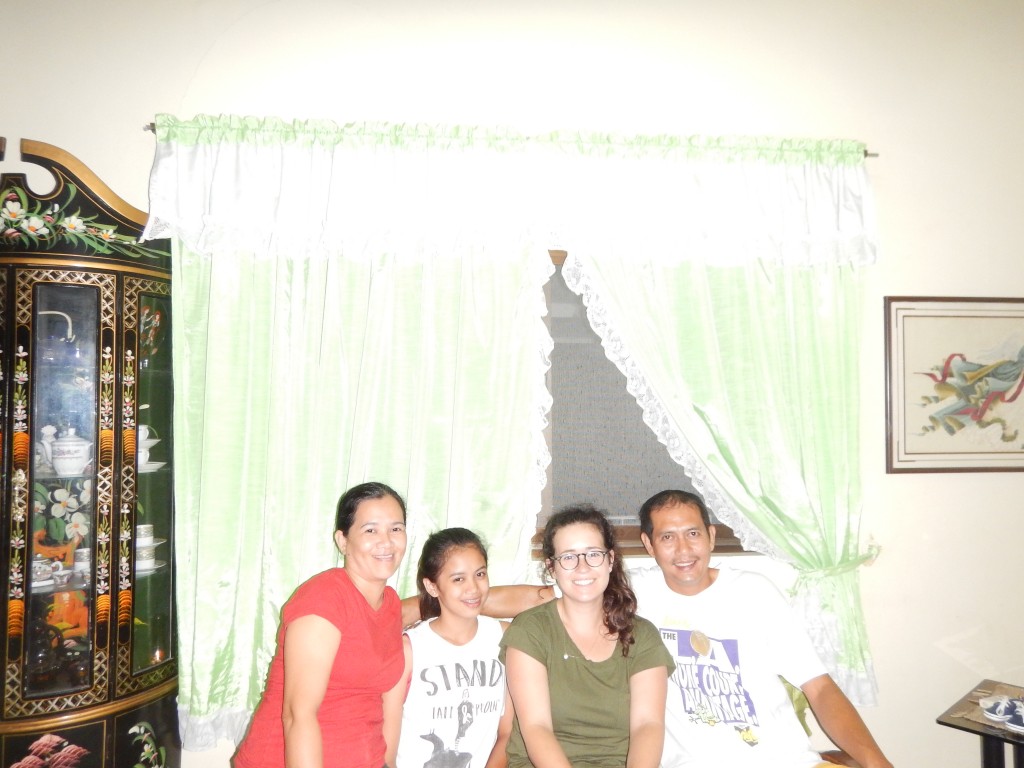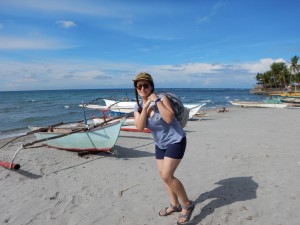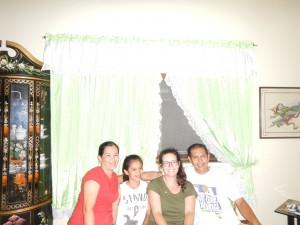Sorry for the infrequent updates. I promise, it will be better at my permanent site, but more on that later.
Over the past month, we produced a report called a Coastal Environmental Profile, which identified the marine resources of Barangay Poblacion, Morong, Bataan as well as documenting socio-economic and infrastructure data. We hosted a youth camp, at which we engaged seventy local high school students in lessons relating to marine ecology and climate change. We used interactive presentations and games to communicate our lessons, despite the language barrier, the day was a success.
We finally conducted our coral assessment, and it was a beautiful day! The water in Sabang, Morong, Bataan where we conducted our survey was calm and clear. We worked in teams and recorded the substrate at every meter mark along a 50 meter transect laid at the ocean floor. We went back afterward and conducted a fish identification survey. We swam in pairs along the same transect, counting the number and species of fish within a five meter width on both sides of the transect. Although fish identification is not my strong suit, I enjoy learning about all the different fish species and their defining characteristics. As we snorkeled around later I saw a school of Moorish idols, there were six altogether, which is a pretty rare sighting. They swam amidst a school of fusiliers. I also saw two anemones each hosting three false-clown fish – the ones that look like Nemo. I also saw a school of cat fish, which were very beautifully clustered and hiding beneath coral cover.
Each training site must conduct a community project. We met with the community about a month ago to decide on a project based on their need. Conveniently, it was decided that we would host a beach clean up followed by short presentations on marine ecosystems, waste management, and marine protected areas. The beach clean up was filled with lessons for us. For one thing, Filipino time is real. Our participants arrived late, as expected. With haste to maintain our schedule, we failed to discuss the procedure for our beach clean up. Our intention was to gather the debris on the beach, an assortment of plastics, fabrics, Styrofoam, cigarette butts, and packaging materials, and have it collected by the waste management collection services, which operate once a week. The default among Filipinos for a beach clean up is to burn the waste – a standard practice where there is no waste collection services – which is exactly what they did. I realized our error as I was picking up a weathered Barbie doll leg and was assaulted by a toxic plume of smoke from one of the bonfires raging along the beach. Myself and the other volunteers, almost by instinct, began sifting through the piles of waste that had been gathered for the fires, and removed all the plastics and other waste we didn’t want to burn. Much of the piles consisted of plant matter that had washed ashore, a lot of coconuts and nepa branches, which wasn’t as great a concern to burn. Luckily, many participants noticed our swift action and they also began sifting through the garbage before adding it to the flames.
Following the beach clean up, we held our lessons. I conducted the lesson on marine protected areas, and engaged in a lively conversation with the fisherfolk that attended our meeting – in broken Tagalog no less! (Not too shabby, considering I only studied Tagalog for about two months).
On September 1, 2014, all of the trainees from the three sectors (Children Youth & Families, Education, and Coastal Resource Management) gathered for our language proficiency interview and permanent site announcements. I passed the exam, and scored a higher level than needed to pass. Now, the moment you have all been waiting for. Where will I spend the next two years?
I am going to a province called Antique (An-tea-kay) in the western Visayas on the island of Panay. My municipality, Pandan, is in the north of Antique. I have heard that the second cleanest river in the Philippines runs through my municipality, we have a natural cold spring, white beaches, and one of two low-land forests in the Philippines with three species of endangered birds. For the past week, I have been studying Kinaray-a, the language spoken in Antique. It is similar to Tagalog in grammatical structure, some words are similar while many are derived from Spanish. Only 200,000 people speak Kinaray-a; I plan to continue studying Tagalog to maintain my level of proficiency.
Training has come to an end, and I had to say goodby to my host family. The Gallano’s have been extremely generous and welcoming. I had a comfortable two months living with them and getting to know them. I look forward to returning to Poblacion, Morong, Bataan to catch up with them over the next two years. Fortunately for me, they will be making a visit to Boracay, an island close to my site, around December-January and I will be able to visit them there.
I’m in Manila now for training wrap-up, swearing in at the US embassy, and farewells as we all depart for our destinations around the Philippines.





